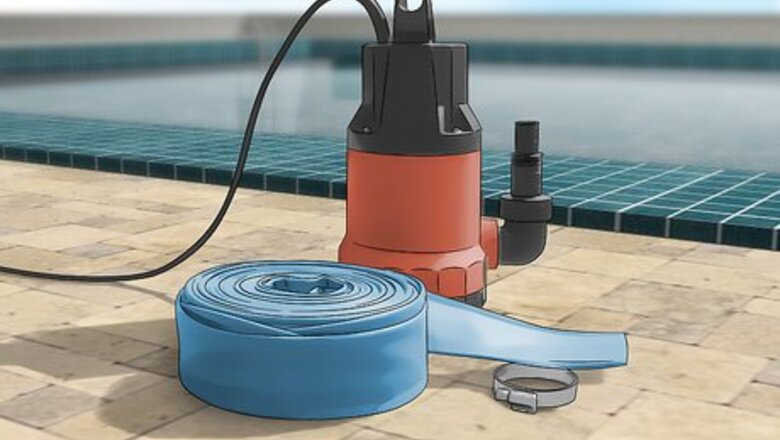
views
Diluting or Draining Your Pool Water
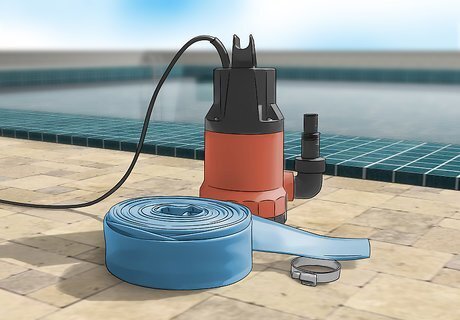
Rent or buy a submersible sump pump. A submersible sump pump is a device that will be able to drain your pool quickly. Many hardware stores will offer to rent them to you for around a day at a time or may have them for sale. Buy a pump for long-term use or rent one early in the day to drain your swimming pool. If you often have difficulties balancing your pool chemistry, it may be worth it to purchase a submersible sump pump. Your local pool store may also have submersible sump pumps that available for rental or purchase. Alternately, you could ask a friend with a pool if they have one you could borrow.

Dilute your pool water if the levels are above 80 ppm. The easiest way to lower the levels of cyanuric acid in your pool is to simply dilute the water. Partially drain your swimming pool by the same percentage by which you want to reduce your cyanuric levels. Calculate the percentage by which you want to reduce the cyanuric acid level and remove around the same percentage of water from your pool. It’s easier to add cyanuric acid to the pool than it is to remove it, so it’s better to overcompensate and dilute the water more than you think you need to.

Drain and refill your pool if you have cyanuric levels over 100 ppm. If your cyanuric acid levels are too high, the easiest solution is to completely drain the pool and fill it with fresh water. Use a submersible sump pump to empty your pool completely. Take advantage of your empty pool and give it a good clean. Use a calcium, lime, and rust remover to clean away calcium or scale rings. Check your local guidelines for more information on where the water you drain from your pool should go. In many cases, you can drain the water into a clean out. A clean out is a small pipe located near the bottom of your home, often near a bathroom or kitchen. Water sent into the clean out will drain into the sewer and be reused by the city.
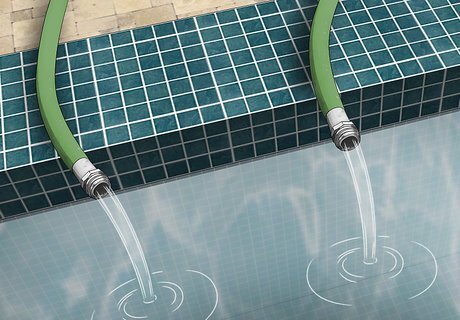
Refill your pool. Once your pool has been drained partially or completely, you can begin refilling it with clean water. Run 1 or more garden hoses into the bottom of your pool and turn them on. Keep an eye on the pool while it fills up to prevent it from overflowing. The water level should be roughly halfway up the pool skimmer.
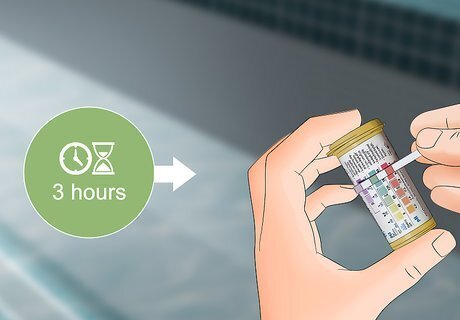
Wait for 3 to 4 hours and test the water again. It will take a few hours for the new water to settle into the pool and for the chemistry to balance. After 3 or 4 hours, use a water test strip or a water quality test kit to check the levels of chlorine and cyanuric acid in your pool. Your pool should have a chlorine level between 2.0 and 3.0 ppm and a cyanuric acid level between 30 and 50 ppm. If these levels are right, then you shouldn’t need to do anything more to alter them.

Add cyanuric acid if the level is below 30 ppm. Follow the manufacturer's instructions or use a cyanuric acid calculator to determine how much acid you need to add. Dissolve the cyanuric acid in roughly 5 gallons (19 L) of water and pour it into your pool. Water chemistry and cyanuric acid calculators can be found online and will do all the math needed to work out how much cyanuric acid you should add.

Leave your pool filter to run for 3 to 4 hours. The pool filter will help cycle the cyanuric acid through your pool and evenly distribute it in the water. Make sure it is running and let it work for 3 to 4 hours. Test your cyanuric acid levels after the filter has had time to run to make sure it is at a safe level. If you have frequent problems with cyanuric acid levels, there may be something else wrong.
Using a Cyanuric Acid Reducer

Test the chlorine levels of your pool water. Most cyanuric acid reducers won’t work as effectively in an over-chlorinated swimming pool. Check the chlorine level in your pool with a water test kit or test strip. If the chlorine levels are above 5.0 ppm, leave the pool exposed to sunlight or use a chlorine neutralizer to lower it. A chlorine level of around 2 to 3 ppm is usually best for a swimming pool. Most basic test kits and test strips should be able to accurately test for chlorine.
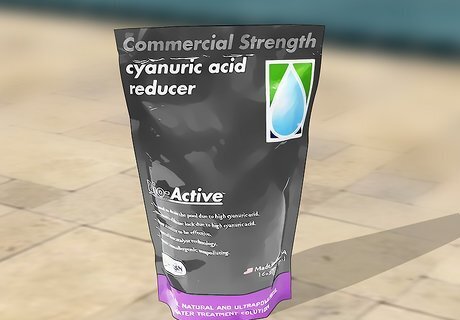
Purchase a cyanuric acid reducer. There are a few cyanuric acid reducers available that may be able to lower the levels of cyanuric acid in your pool without needing to drain or dilute it. Ask at your local pool store or look online for a cyanuric acid reducer appropriate for the size of your pool. You will need roughly 8 ounces (230 g) of cyanuric acid reducer for every 10,000 gallons (38,000 L).
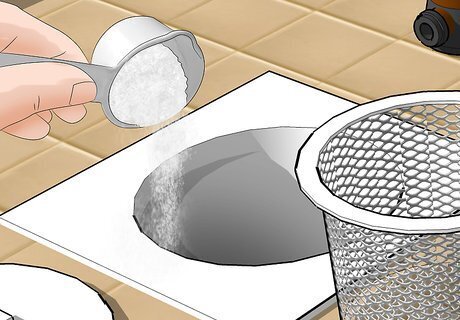
Pour the reducer into your pool skimmer. The pool skimmer is the point in your pool where water will be able to enter the filter, which should be accessible from the outside of the pool. Remove the cover and pour in your cyanuric acid reducer. Some swimming pools will have more than 1 skimmer. If your pool has more than 1, pick a skimmer near the middle of the pool to pour your reducer into.
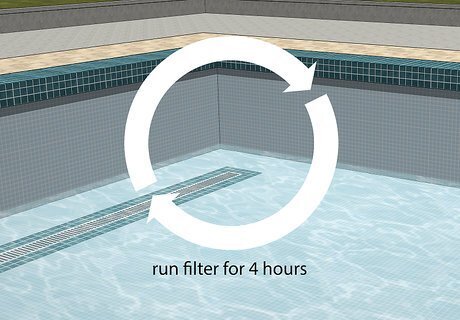
Let your pool filter run for 4 hours. The pool filter will help cycle the reducer through your entire pool and work with all of the cyanuric acid throughout your system. Once you pour in the reducer, make sure your pool filter is running and leave it to work undisturbed for 3 to 4 hours. Test the pool water once the filter has been left to run to make sure the cyanuric acid reducer has worked. If it hasn’t, you may need to partially or completely drain your swimming pool and refill.
Testing Your Cyanuric Acid Levels

Use specialty test strips for a quick and simple check. While most water test strips will only check for chlorine and pH levels, some more advanced or specialty strips will be able to check the levels of cyanuric acid. Purchase a water test strip that can detect cyanuric acid, dip it into your pool water for 30 seconds, and use the attached guide to check the levels. Water test strips that can check levels of cyanuric acid should be available online or at your local specialty pool store. Always follow the manufacturer’s guide for your own water test strips, as different strips may work differently. If the cyanuric acid levels in your pool are too high, you might not be able to read them with a standard test strip. Take a water sample to your local pool store and ask them to test it. This will give you a much more accurate and reliable reading.

Opt for a water quality test kit for a more thorough examination. Water quality test kits tend to be more reliable and accurate than test strips, but will also be more costly as a result. Purchase a water quality test kit that can check cyanuric acid level and follow the manufacturer’s instructions to check the levels. Water quality test kits should be available online or from your local specialty pool store. Most will involve taking a water sample and adding chemicals that change color based on the presence of different colors. For the best results, follow the instructions on your test kit.

Keep your cyanuric acid levels between 30 and 50 ppm. There’s a lot of discussion around the most effective level of cyanuric acid to keep in your pool. Levels between 30 and 50 ppm (particles per million) tend to work well, although levels up to 80 ppm can be safe. Check your cyanuric acid levels to make sure they are in the safe limits. The World Health Organization (WHO) recommends that your cyanuric levels stay below 100 ppm. If your level is above 100 ppm, you should dilute the water or refill your pool to lower it. Too much cyanuric acid can overwhelm the chlorine in your pool and stop it from working at all. If you add too much cyanuric acid and the levels get too high, you’ll need to replace the water and fill it with chlorine and cyanuric acid again to keep it clean. If your cyanuric levels are too high, you might not be able to read them with a consumer grade water test kit. Take a sample of your water to a specialty pool store to get it tested further before attempting to lower the cyanuric acid in your pool.

Check your pool water quality each week and after heavy rain. The amount of cyanuric acid in your pool can change on a frequent basis as the water is filtered and diluted. To keep your cyanuric levels consistent and avoid having to raise them, check the levels at least once a week and after heavy rain. If your cyanuric levels fall too low, the chlorine in your pool will be destroyed by the sun’s UV rays and stop it from working. This will leave your pool water more vulnerable to contaminants and give you a dirty pool.


















Comments
0 comment